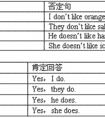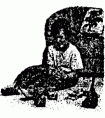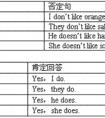用所给词的适当形式填空。1. Therearefour(season)inayear.2.Aretheremanypupilsintheparkon(children)Day?3.MaryandTomwatchTV(third)timesaweek.4.Doyou like(swim-六年级英语
1.03 meters 一点零三米
0.49 ton 零点四九吨
l.5 tons 一点五吨
二、时刻表示法
1. 表示几点钟用基数词加可以省略的o/’clock
5:00 读作 five o/’clock 或 five
2. 表示几点过几分,在分钟后加past,再加小时
five past seven 七点过五分
half past six 六点半
a quarter past eight 八点过一刻
seven past eight 八点过七分
3. 表示几点差几分,在分钟后面加to,再加小时
ten to eight 差十分八点(七点五十分)
a quarter to twelve 差一刻十二点(十一点四十五分)
twenty to six 差二十分六点(五点四十分)
在日常生活中,常用下列简单方法表示时间。
以小时、分种为单位分别读出数字。
6:31 读作 six thirty-one
10:26 读作 ten twenty-six
14:03 读作 fourteen o three
16:15 读作 sixteen fifteen
18:30 读作 eighteen thirty
23:55 读作 twenty-three fifty-five
注:时刻表上的时间大多采用24小时表示法,这样就不需要用a.m.表示上午,p.m.表示下午了。
三、年月表示法
1. 世纪可以用定冠词加序数词加世纪century表示,也可以用定冠词加百位进数加/’s表示
the sixth(6th)century 公元六世纪
the eighteenth(18th)century 公元十八世纪
the 1900/’s 二十世纪
the 1600/’s 十七世纪
这里,用百位数整数表示的世纪比这一百位阿拉伯数字本身多一个世纪。
2. 年代用定冠词及基数词表示的世纪加十位整数的复数形式构成
in the 1930/’s(in the thirties of the twentieth century或 in the nineteen thirties)
在二十世纪三十年代
in the 1860/’s(in the sixties of the 19th century或 in the eighteen sixties)
在十九世纪六十年代
In the 1870/’s when Marx was already in his fifties,he found it important to study the situation in Russia,so he began to learn Russian.
在十九世纪七十年代当马克思已经五十多岁时,他发现研究俄国的形势很重要,便开始学习俄语。
3. 表示某年代的早期、中期和晚期,可以在定冠词后,年代前添加 early,mid-,late
in the early 1920/’s 在二十世纪二十年代早期
in the mid-1950/’s 在二十世纪五十年代中期
4. 年月日表示法
A.年份用基数词表示,一般写为阿拉伯数字,读时可以以hundred为单位,也可以以世纪、年代为单位分别来读。
1949 读作 nineteen hundred and forty-nine 或 nineteen forty-nine
1800 读作 eighteen hundred
253 读作 two hundred and fifty-three或two fifty-three
1902 读作 nineteen hundred and two或 nineteen o two
表示在哪一年,一般在年数前加介词in,使用year时,year放在数词之前。
in the year two fifty-three B.C. 在公元前253年
但是,通常采用in加表示年份的阿拉伯数字。
B. 月份,在哪个月用介词in加第一个字母大写的月份词表示。
例如:in May在五月; in July在七月。
为了简便起见,月份与日期连用时,月份常用缩写形式表示。
缩写形式除May,June,July外,其它的月份都由其前三个字母表示,但September除外。
January——Jan.一月
February——Feb.二月
March——Mar. 三月
April——Apr.四月
August——Aug.八月
September——Sept.九月
October——Oct.十月
November——Nov.十一月
December——Dec.十二月
注:这里缩写形式后面加点不能省略,因为它是表示缩写形式的符号。
C.日期用定冠词the加序数词表示。在哪一天要添加介词on。
National Day is on Oct. 1.
国庆节是十月一日。(读作 October first)
此句也可以表示为 National Day is on the 1st of October.
May 5 五月五日(读作May fifth)
也可以表示为the fifth(5th)of May
Mar. 1(st) 三月一日(读作March first或 the first of March)
5. 表示不具体、不确切的时间,如世纪、年代、年份、月份时,用介词in表示;
表示具体确切的某一天用介词on表示通常情况下morning,afternoon,evening等词前用介词in。
但是,当这些词前后有一修饰限定的词作为定语,把它们限定为某一天早晨、下午或晚上时,介词in应改为on。
这里的修饰限定词可以是介词短语、名词、形容词、定语从句等。
On a cold morning,the old man died lonely in his house.
在一个寒冷的早晨,这个老人孤独地死在自己的房子里。
I don/’t want to be disturbed on nights when I have to study.
我不愿意在我必须学习的晚上被打扰。
The accident happened on the afternoon of July 7.
这次事故发生在7月7日下午。
We are to have a small test on Monday morning.
星期一早晨我们将进行一次小测验。
四、加减乘除表示法
1. “加”用plus,and或add表示;“等于”用is,make,equal等词表示。
2+3=? 可表示为: How much is two plus three?
2+3=5
Two plus three is five.
Two and three is equal to five.
Two and three make five.
Two added to three equals five.
If we add two to/and three, we get five.
二加三等于五
2. “减”用 minus或 take from表示
10-6=? How much is ten minus six?
10-6=4
Ten minus six is four.
Take six from ten and the remainder is four.
Six (taken) from ten is four.
十减去六等于四
3. “乘”用time(动词)或multiply表示
3×4=? How much is three times four?
3×4=12
Three times four is/are twelve.
Multiply three by four,we get twelve.
Three multiplied by four makes twelve.
三乘以四等于十二
4. “除”用divide的过去分词形式表示
16÷4=? How much is sixteen divided by four?
16÷4=4
Sixteen divided by four is four.
Sixteen divided by four equals/gives/makes four.
十六除以四等于四。
考点名称:动名词
- 动名词:
如果一个动词加上了-ing变成了名词,那么这个词称动名词。 动名词是一种兼有动词和名词特征
的非限定动词。它可以支配宾语,也能被副词修饰。动名词有时态和语态的变化。
例:Reading is an art. 读书是一种艺术。
Swimming is a good sport in summer. 游泳是夏天一项好的运动。
There is no saying when he'll come. 很难说他何时回来。
No smoking. (=No smoking is allowed here) . 禁止吸烟!
No parking. 禁止停车!
Let’s go shopping. 让我们去购物。 动名词常见题型:
1)动名词做主语时,谓语动词为单数
2)在动名词和不定式中,作为介词的宾语是动名词
3)动名词的否定直接在其前加否定词,通过代词的宾格或所有格形式给出逻辑主语
例:
I would appreciate_______ back this afternoon.
A.you to call
B.you call
C.you calling
D.you’re calling
(Key:C;换成your calling也对)
4)有些词后只能接动名词
acknowledge;admit; advise;advocate;allow;appreciate; avoid; celebrate; consider; contemplate; defer; delay; deny; detest; discontinue; dislike; dispute; enjoy; it entails; escape; excuse; explain; fancy; feel like; finish; forgive; can’t help; hinder; imagine; it involves; keep; it means; mention; mind; miss; it necessitates; pardon; postpone; practice; prevent; recall; report; resent; resist; risk; suggest; understand...
5)另外还有一些接-ing形式的常用说法
it’s no good; it’s no/little/hardly any/ use; it’s not/hardly/scarcely use; it’s worthwhile; spend money/time; there’s no; there’s no point in; there’s nothing worse than; what’s the use/point...
6)有些词后面加不定式和动名词均可
remember,forget,try,stop,go on,continue,stop,regret,cease,mean后面均可用不定式和-ing形式,但意义截然不容。
例:
remember to do/doing:
①I remembered to post the letters.(指未来/过去未来将要做的动作)
②I remembered posting/having posted the letters.(我记得做过这个动作)
forget与remember的用法类似。
regret的用法:
①I regret to inform you that…(我很遗憾地通知你……)
②I regretted having left the firm after twenty years.(为了“二十年前的离开”而遗憾。)
try to(努力)与try +–ing(试验):
①You really must try to overcome your shyness.
②Try practicing five hours a day.动名词用法口诀:
动名词常泛指,句法作用宾/表/定与主,时态/语态之形式,一般/完成/被动式。
Being done 系被动,不含任何进行意。
用作主语请留意,常用it作形式主语,不指未来发生事,表达的信息系已知。
用作表语请记清,作用相当一名词,检验方法很简单,主与表换位能成立。
用作定语也易辩,表示名词之用途。
用作宾语稍复杂,关键留意谓语动词(跟动名词作宾语的常用动词附后),时态同谓动作比较,先于谓动用完成式,其逻辑主语不固定,在句中/句外均有之。
否定式其前加not,复合式其前加物主词,非句首宾格词也可用,尤其口语中更如此。
- 最新内容
- 相关内容
- 网友推荐
- 图文推荐
| [家长教育] 孩子为什么会和父母感情疏离? (2019-07-14) |
| [教师分享] 给远方姐姐的一封信 (2018-11-07) |
| [教师分享] 伸缩门 (2018-11-07) |
| [教师分享] 回家乡 (2018-11-07) |
| [教师分享] 是风味也是人间 (2018-11-07) |
| [教师分享] 一句格言的启示 (2018-11-07) |
| [教师分享] 无规矩不成方圆 (2018-11-07) |
| [教师分享] 第十届全国教育名家论坛有感(二) (2018-11-07) |
| [教师分享] 贪玩的小狗 (2018-11-07) |
| [教师分享] 未命名文章 (2018-11-07) |





![Therabbitlikes_________.[ ]A.bonesB.chickenC.fishD.vegetables-四年级英语](http://www.00-edu.com/d/file/ks/4/1/9/2019-08-12/small19d909f6c152d7dbd99050270d09dd701565564237.gif)
